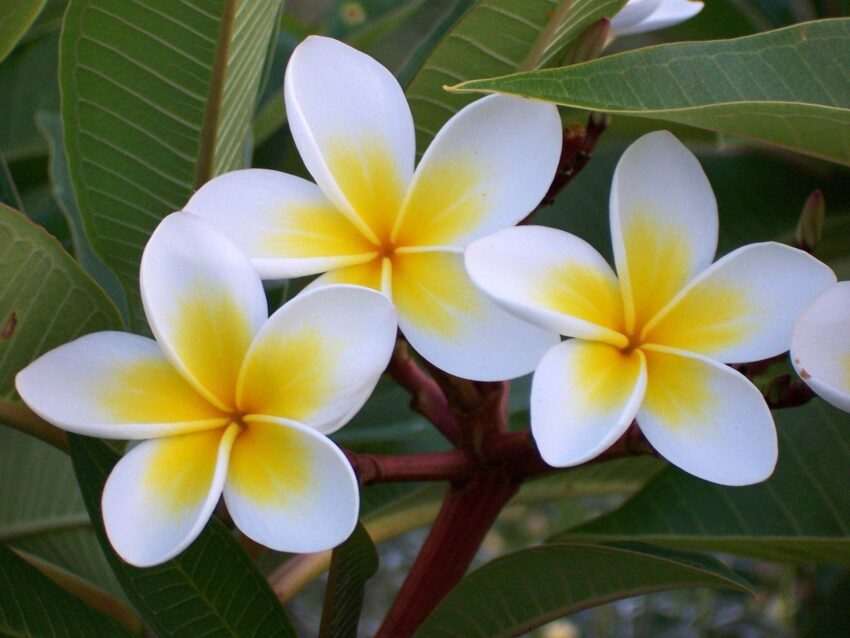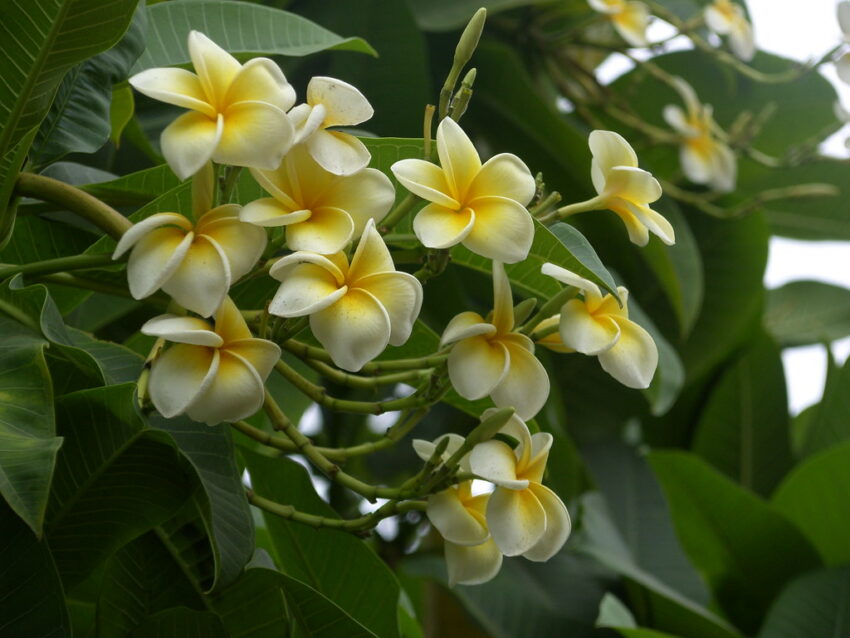
What is the National Flower of Nicaragua?
Nicaragua is a beautiful country located in Central America, famous for its stunning landscapes, colorful traditions, and rich biodiversity. One of the most important symbols of this country is its national flower, a delicate and exotic species that represents the natural wonders and cultural heritage of this land. In this article, we will explore the history, characteristics, and significance of the national flower of Nicaragua, as well as its role in the local traditions and the international community. Join us on this journey to discover the secrets of one of the most beautiful flowers in the world! The article is contributed by Begardenly.
The Introduction of the National Flower

The national flower of Nicaragua is called the “Sacuanjoche,” which is a native species of the region known scientifically as Plumeria rubra. This flower belongs to the family Apocynaceae and is widely spread throughout the tropical and subtropical regions of America, Asia, and Africa. The name “Sacuanjoche” comes from the Nahuatl language, which was spoken by the indigenous people of Central America before the arrival of the Spanish conquerors. In this language, “Sacuan” means “yellow” and “joche” means “tree,” which refers to the bright yellow color of the flowers and the woody nature of the plant.
The Characteristics of the Sacuanjoche Flower
The Sacuanjoche flower is a small to medium-sized tree that can grow up to 7 meters tall, with a trunk diameter of about 30 cm. The leaves are green and glossy, arranged in a spiral pattern, and can measure up to 50 cm long and 20 cm wide. The flowers are highly fragrant and have a distinctive shape, with five petals that form a star-like shape and a central corolla that resembles a small cup. The color of the flowers can vary from pure white to yellow, pink, or red, depending on the variety and the environmental conditions. The fruits of the Sacuanjoche are long and slender pods that contain numerous seeds, which are dispersed by the wind or animals. Continue reading: HOW TO CLEAN UP ROUNDUP SPILL ON CONCRETE
The Symbolism of the Sacuanjoche Flower
The Sacuanjoche flower has a deep symbolic meaning in Nicaraguan culture, as it represents several aspects of the national identity and the spiritual beliefs of the people. First of all, the bright yellow color of the flower is associated with happiness, joy, and prosperity, which are essential values in Nicaraguan society. The fragrance of the flower is also considered a symbol of purity, innocence, and beauty, as it reminds people of the natural essence of life and the importance of preserving it. Moreover, the Sacuanjoche flower is a sacred symbol in the indigenous traditions of Nicaragua, where it is believed to have healing powers and to protect the people from evil spirits.
The Role of the Sacuanjoche Flower in the Nicaraguan Traditions
The Sacuanjoche flower is an essential element in many of the traditional festivals and ceremonies of Nicaragua, where it is used to decorate altars, floats, and houses, as well as to make perfumes, oils, and cosmetics. One of the most famous events where the Sacuanjoche flower is honored is the “Fiesta de San Sebastian,” which takes place every January in the city of Diriamba. During this festival, thousands of people gather to dance, sing, and pray in honor of the patron saint of the town, accompanied by the fragrance and beauty of the Sacuanjoche flowers.
The International Recognition of the Sacuanjoche Flower
The beauty and significance of the Sacuanjoche flower have not gone unnoticed by the international community, which has recognized its value as a natural and cultural heritage of Nicaragua. In 1971, the Sacuanjoche flower was officially declared the national flower of Nicaragua by the government, which aimed to promote the country’s unique biodiversity and cultural identity. Since then, the Sacuanjoche flower has become a popular icon for Nicaraguans around the world, who proudly display it in their homes, clothes, and souvenirs. The Sacuanjoche flower has also been featured in several international events and competitions, where it has received numerous awards and recognitions for its beauty and significance.
The Conservation and Preservation of the Sacuanjoche Flower
Despite its cultural and ecological importance, the Sacuanjoche flower is facing several threats and challenges that put its survival at risk. The rapid urbanization, deforestation, and climate change in Nicaragua have led to the loss of many natural habitats and the degradation of the soil and water resources that the Sacuanjoche tree depends on. Moreover, the overexploitation of the Sacuanjoche flower for commercial purposes and the introduction of invasive species have further decreased the population of this species and endangered its genetic diversity.
To address these issues, several initiatives and organizations have been established in Nicaragua to promote the conservation and preservation of the Sacuanjoche flower and its natural environment. These include the creation of protected areas, the implementation of sustainable agriculture practices, the promotion of eco-tourism, and the education and awareness-raising campaigns for the local communities. By supporting these efforts, we can ensure that the Sacuanjoche flower will continue to thrive and inspire generations to come.
In conclusion, the national flower of Nicaragua, the Sacuanjoche, is a unique and valuable species that embodies the beauty, diversity, and heritage of this wonderful country. With its bright colors, sweet fragrance, and rich symbolism, the Sacuanjoche flower has captured the hearts and minds of people around the world, who admire its natural beauty and cultural significance. However, we must also remember that the Sacuanjoche flower is facing several challenges and threats that require our attention and action. By working together to preserve and protect this precious gift of nature, we can ensure a brighter future for Nicaragua and for all living beings.
